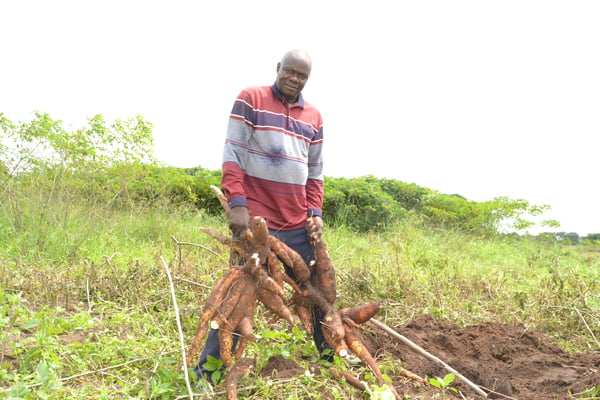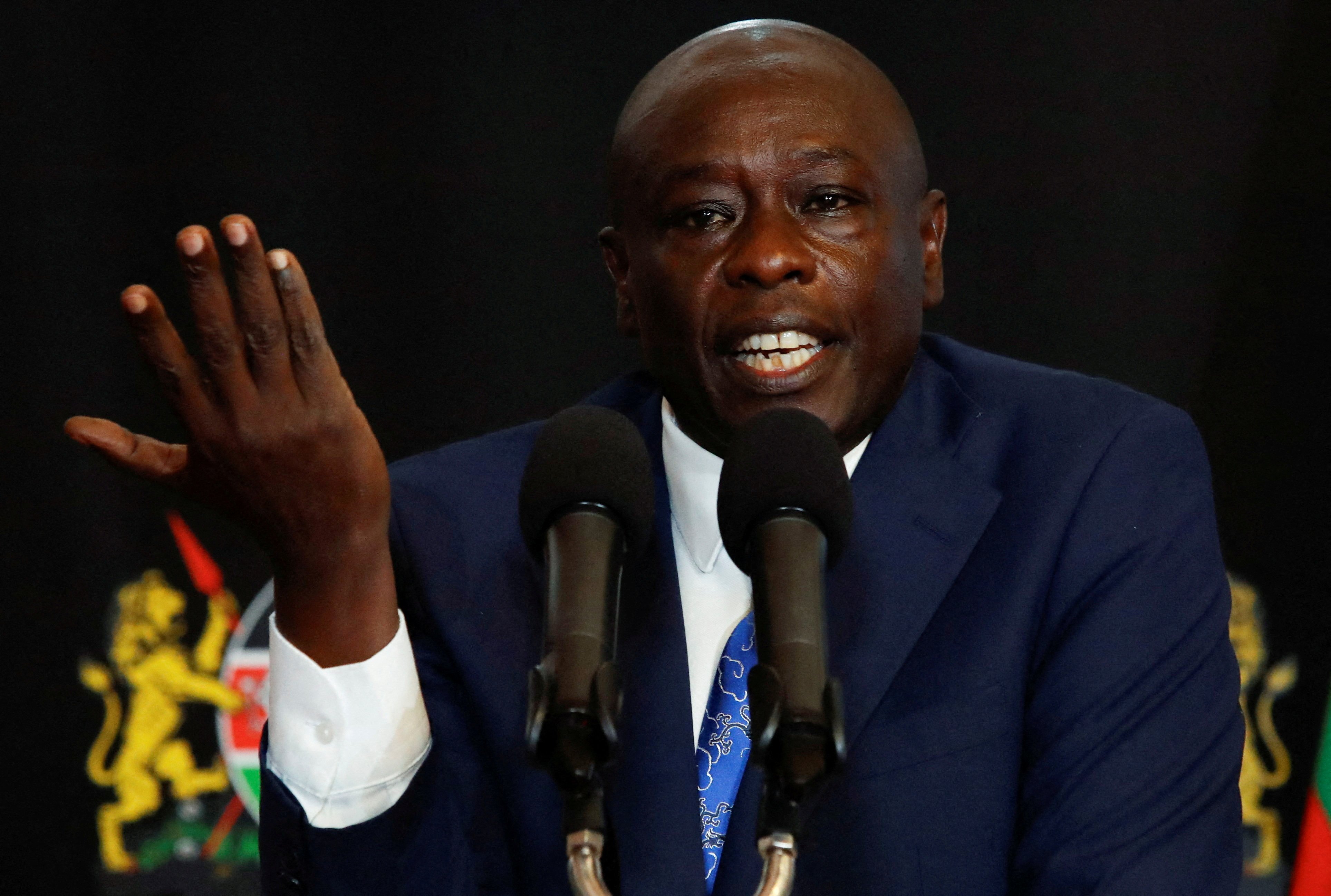Prime
How Kajura mills money from cassava

Kajura displays cassava tubers after harvest. Photo | Dan Wandera
What you need to know:
- In 2020 when Nakasongola District Production Office supplied the NASE 14 and Naro CASS (1) for trials, Robert Lwanga Kajura was among the recipients of the new cassava varieties supplied under the National Agricultural Advisory Services (Naads) programme.
Cassava, a staple food for not only Nakasongola area, but several other districts in the north, eastern parts of Uganda is under threat from disease attack that has drastically impacted on the farmer output in the respective areas.
In Nakasongola District where the Cassava Brown Streak(CBSD) and the Cassava Mosaic (CMD) diseases account for the dwindling cassava production rates with many farmers shifting to less stressful farm projects, Robert Lwanga Kajura, a commercial cassava farmer has mastered the tricks of sustaining the crop which sits on 50-acres.
How he does it
Kajura says the trick is in proper garden planning and sourcing the right variety cuttings from the recommended suppliers partly explains his success.
“I don’t get the cassava cuttings from anybody without verifying the origin and the variety. I grow a single variety without mixing to keep record of the good cuttings. These are sourced from certified farmers. This has greatly helped me fight CBSD,” he says.
Because the indigenous cassava crop varieties that include Tereka and Pala that were the majorly grown in Nakasongola got wiped out by the Cassava Mosaic and the CBSD diseases, the farmers had to take on varieties introduced between 2019 and 2020 by the National Agriculture Research Organisation (Naro). Unfortunately, many farmers that tried to mix the old varieties and the new varieties that include; NASE 14 and Naro CASS (1) got trapped into the diseases again. But because Kajura was a large-scale farmer growing cassava for commercial purposes, he zeroed on planting the new varieties in different plots.
Improved varieties
In 2020 when Nakasongola District Production Office supplied the NASE 14 and Naro CASS (1) for trials, Kajura was among the recipients of the new cassava varieties supplied under the National Agricultural Advisory Services (Naads) programme.
“I planted the new cassava variety cuttings, but maintained the practice of ensuring that there is no mix-up in the varieties at my gardens. This partly helped me to study the new varieties and find out how they cope with our soils. The trick paid off. While farmers that mixed the old varieties and new varieties found the CBSD attacking their gardens, my gardens remained safe,” he says.
Sarah Nakamya, the Nakasongola District production officer, says cassava production in the district has been affected by the CBSD and CMD diseases that partly explain the decline in production.
“Unlike the few farmers including our model farmers like Robert Lwanga Kajura that have embraced improved farming skills and planted the new varieties as instructed, the diseases remain a big burden to the wider population in Nakasongola. Several of our farmers get cuttings that are at times infected and not good for planting. This explains the cassava disease burden,” says.
The disease-resistant varieties that include NASE 14, Naro CASS (1) according to Ms Nakamya (DPO) have been effective in fighting off the CBSD for particular farmers that have adapted to the improved farming mechanism. While the new varieties have a dual resistance to both the CMD and CBSD diseases, mixing the varieties with the disease-prone varieties has not helped the farmers.
“We have farmers that want to try out every type of cassava cutting picked from different gardens and end up planting the diseased varieties mixed up with the disease-resistant variety. You find the entire garden getting infected with the disease,” she explains.
Sustaining production
Unlike many farmers that plant a single season per year, Kajura now harvests two seasons for the cassava crop grown on his more than 50-acre mixed farm.
The market
Like many other crops, cassava production comes with the market challenge for farmers that target commercial production. Unlike many farmers that supply the cassava to the urban food consumers and schools, Kajura now supplies the cassava tubers to a starch production plant at Shs200 per kilogramme.
With the production capacity of at least 3,000 plants per acre, Kajura targets an income of Shs10m per harvest season from the cassava tubers supplied to PURA Organic Agro Tech Limited, a starch production plant located about 20kms away from his farm at Namansa Village on the Kampala- Highway in Nakasongola District.
When the cassava gardens are two month old, Kajura utilises the same gardens to plant the water melon and beans that are quick maturing to earn extra income from the same gardens. With the help of his wife Ms Margaret Lwanga and children, the family has also ventured into beekeeping, poultry, cattle rearing and mango fruit growing.
Key fact
Cassava does well in well-drained sandy loam soils with a pH of between 5.5 to 6.5. It thrives in a temperature of between 250C to 320C and rainfall of between 1,000-1,500mm. However, the crop can survive in dry conditions making it suitable for arid and semi-arid areas.





